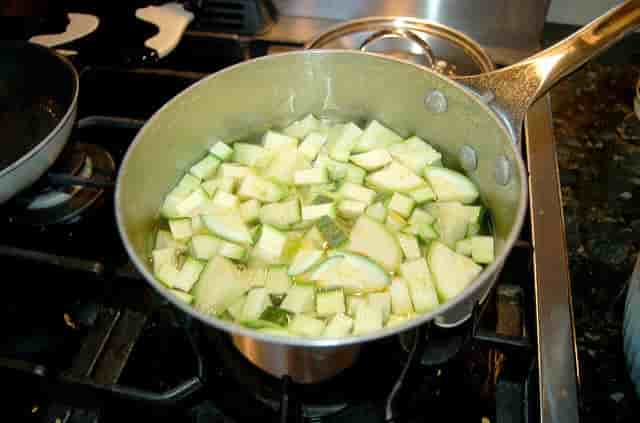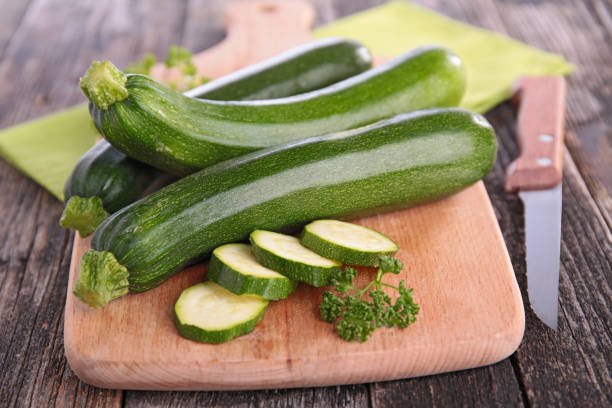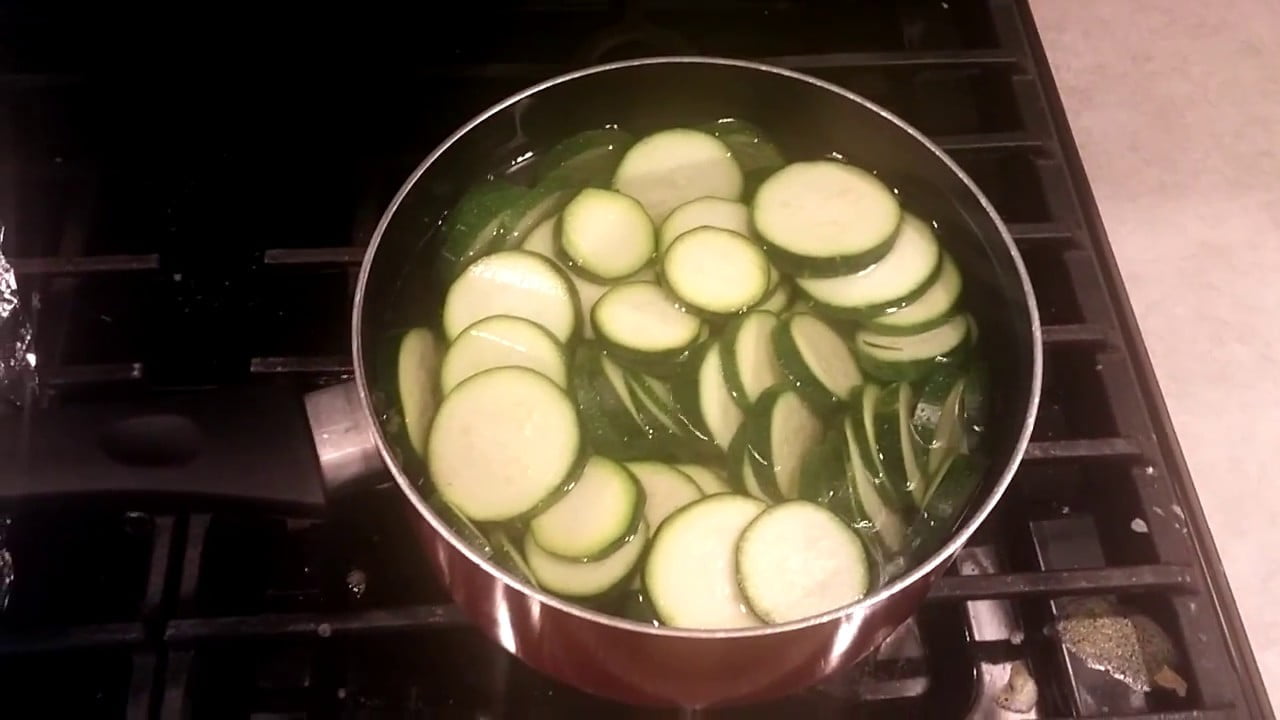Are you looking for a simple yet delicious way to enhance the flavor of your fish dish? Look no further than blanching zucchini! In just a few easy steps, you can create beautifully vibrant zucchini that perfectly complements any fish recipe. Whether you’re a culinary expert or a novice cook, this article will guide you through the process of blanching zucchini for fish, ensuring a mouthwatering result that will impress your friends and family. So grab your apron and let’s get started on this tasty adventure!
Choosing the Right Zucchini
Selecting Fresh and Firm Zucchini
When it comes to blanching zucchini for your fish dish, selecting fresh and firm zucchini is crucial. Look for zucchini that is vibrant in color and free from any blemishes or soft spots. The skin should be smooth and shiny. Give it a gentle squeeze to ensure that it feels firm and not mushy. Fresh zucchini will have a slight give but should not be too soft.
Choosing the Appropriate Size
The size of the zucchini you choose will depend on your personal preference and the recipe you are preparing. For blanching, it is best to choose zucchini that is medium-sized and uniform in shape. These zucchinis are easier to handle and will cook more evenly. However, if you prefer bigger slices, feel free to opt for larger zucchinis. Just keep in mind that the cooking time may need to be adjusted accordingly.
Preparing the Zucchini
Washing the Zucchini
Before preparing your zucchini for blanching, it is important to give them a thorough wash. Rinse the zucchinis under cool running water to remove any dirt or debris. Use your hands to gently rub the surface of the zucchinis to ensure they are clean. Once washed, pat them dry with a paper towel.
Trimming the Ends
The next step in preparing your zucchini is to trim off the ends. Use a sharp knife to remove the stem end and the blossom end of each zucchini. These ends can be tough and bitter, so it is best to discard them. Once the ends are trimmed, your zucchinis are ready for the next step.
Peeling (Optional)
While peeling zucchini is not necessary, it can alter the appearance and texture of the final dish. If you prefer a smoother texture or simply prefer the look of peeled zucchini, you can choose to peel the zucchinis before blanching. Use a vegetable peeler to gently remove the skin in long, even strokes. Peel the zucchinis all around until they are completely skin-free.

Cutting and Slicing the Zucchini
Determining the Desired Shape and Size
Before cutting and slicing your zucchini for blanching, it is important to determine the desired shape and size. Are you looking for round slices, half-moons, or even julienne strips? This will depend on the recipe you are following or your personal preference. Once you have decided on the shape and size, you can proceed to the next step.
Slicing the Zucchini into Rounds
For most fish dishes, round slices are a popular choice. To achieve this shape, start by slicing off a small piece from one end of the zucchini to create a flat surface. This will help stabilize the zucchini while you slice it. Then, using a sharp knife, carefully slice the zucchini into even rounds, about ¼ to ½ inch thick. Repeat this process with each zucchini until you have the desired amount of slices.
Blanching Zucchini
Preparing an Ice Bath
Blanching zucchini involves quickly cooking the slices in boiling water and then stopping the cooking process by transferring them to an ice bath. To prepare an ice bath, fill a large bowl with cold water and add ice cubes. The ice bath will help cool down the zucchini rapidly and preserve their vibrant green color.
Boiling Water in a Large Pot
In order to blanch the zucchini slices, you will need a large pot of boiling water. Fill a pot with water, leaving enough space for the zucchini slices. Bring the water to a rolling boil over high heat. It is important to have enough water in the pot to fully submerge the zucchini slices.
Blanching the Zucchini
Once the water is boiling, carefully drop the zucchini slices into the pot. Let them cook for about 1 to 2 minutes, or until they are slightly tender but still have a bit of crunch. Do not overcrowd the pot, as this can result in uneven cooking. You may need to blanch them in batches if you have a large quantity of zucchini slices. Use a slotted spoon or tongs to transfer the blanched zucchini slices to the ice bath immediately to stop the cooking process.

Testing for Doneness
Performing the Fork Test
To ensure that your blanched zucchini slices are cooked to perfection, you can perform a simple fork test. Take a fork and gently pierce one of the slices. If the fork easily goes through with little resistance, the zucchini is cooked and ready. If there is still some resistance, blanch the slices for another 30 seconds to a minute and test again.
Checking for Translucent Zucchini Slices
Another visual indicator of doneness is the color and texture of the zucchini slices. Ideally, blanched zucchini slices should be translucent and evenly cooked. If the slices appear pale and opaque, they may need more blanching time. However, be careful not to overcook them, as they can become mushy and lose their vibrant color.
Draining and Cooling the Zucchini
Removing the Zucchini from Boiling Water
Once the zucchini slices have been blanched to perfection, it is important to remove them from the boiling water promptly. Using a slotted spoon or tongs, lift the slices out of the pot, allowing any excess water to drain back into the pot. Shake off any excess water from the slices before transferring them to the ice bath.
Plunging into the Ice Bath
Take the blanched zucchini slices and carefully place them into the prepared ice bath. Make sure they are fully submerged in the cold water to stop the cooking process and cool them down rapidly. Allow the zucchini slices to sit in the ice bath for about 1 to 2 minutes, or until they are completely cool. This step helps preserve their vibrant color and crisp texture.
Allowing the Zucchini to Cool
After the blanched zucchini slices have spent sufficient time in the ice bath, it is important to let them cool completely. Remove the slices from the ice bath and place them on a clean kitchen towel or paper towel to dry. Once they are dry, you can transfer them to a separate plate or dish and set them aside until you are ready to serve or store them.

Storing Blanched Zucchini
Using Immediately
If you plan to use the blanched zucchini slices right away, it is best to store them at room temperature to maintain their texture. Keep them covered with a clean kitchen towel or plastic wrap to prevent them from drying out. However, keep in mind that blanched zucchini slices are best consumed within a day or two to ensure optimal freshness.
Refrigerating for Short-Term Storage
If you have blanched zucchini slices that you want to keep for a few days, it is recommended to store them in the refrigerator. Place the slices in an airtight container or a resealable plastic bag. Make sure to remove any excess air before sealing. Stored properly, blanched zucchini slices can last in the refrigerator for up to 5 days.
Freezing for Long-Term Storage
Blanched zucchini slices can also be frozen for long-term storage, allowing you to enjoy them even after several weeks or months. To freeze the slices, arrange them in a single layer on a baking sheet lined with parchment paper. Place the baking sheet in the freezer for a few hours, or until the slices are frozen solid. Once frozen, transfer the zucchini slices into a freezer-safe bag or container. Label the bag with the date and store them in the freezer for up to 3 months.
Preparing Fish for Cooking
Selecting the Fish
When it comes to preparing fish to serve with blanched zucchini, it is important to choose fresh, high-quality fish. Look for fish that has clear, bright eyes, shiny and smooth skin, and firm flesh. Depending on your personal preference and the recipe you are following, you can choose from a variety of fish such as salmon, trout, halibut, or sea bass.
Preparing the Fish Fillets
Once you have chosen your fish, it is time to prepare the fillets for cooking. Start by rinsing the fish fillets under cold water to remove any impurities. Pat them dry with a paper towel to remove excess moisture. If there are any pin bones present, use tweezers to carefully remove them. Season the fish fillets with salt and pepper, or any other preferred seasonings, to enhance their flavor.
Seasoning the Fish
To add flavor to your fish fillets, you can use a variety of seasonings and herbs. Simple flavors like lemon zest, garlic, and herbs like rosemary or dill can complement the delicate taste of fish. Sprinkle your chosen seasonings evenly over both sides of the fillets, gently pressing them into the flesh. Allow the fillets to rest for a few minutes to absorb the flavors before cooking.

Cooking the Fish
Choosing the Cooking Method
When it comes to cooking fish, there are various methods you can choose from. Grilling, baking, pan-searing, and broiling are popular options that can result in deliciously cooked fish. Consider the recipe you are following and the desired outcome to select the best cooking method for your fish fillets.
Preparing the Pan or Grill
Before cooking your fish, it is important to prepare the cooking surface to prevent sticking. If you are using a pan, preheat it over medium heat and lightly coat it with oil or butter. If you are grilling the fish, preheat the grill to medium-high heat and lightly oil the grates to prevent the fish from sticking. Properly greasing the cooking surface will ensure that your fish fillets cook evenly and come off easily.
Cooking the Fish to Perfection
Once the cooking surface is prepared, it is time to cook your fish fillets. Place the fillets on the preheated pan or grill, presentation side down first. Cook the fish for a few minutes on each side, depending on the thickness of the fillets. Avoid flipping the fish too soon to prevent it from falling apart. The fish should be opaque and flaky when cooked through. Use a fork to gently test the doneness by flaking the fish. Once cooked, remove the fillets from the pan or grill and allow them to rest for a couple of minutes before serving.
Serving the Fish with Blanched Zucchini
Plating the Fish and Zucchini
To serve your cooked fish with blanched zucchini, start by arranging the fish fillets on a plate. Take the blanched zucchini slices and place them alongside the fish. You can choose to overlap the zucchini slices or create an artistic arrangement depending on your presentation preference. Make sure to leave some space for additional garnishes and accompaniments.
Garnishing with Herbs or Lemon
To add an extra pop of flavor and visual appeal to your dish, consider garnishing the fish and zucchini with fresh herbs, such as parsley, cilantro, or dill. Sprinkle some chopped herbs over the top of the fish and zucchini slices to enhance their aroma and provide a vibrant touch. Additionally, you can add a squeeze of fresh lemon juice over the fish to enhance its natural flavors.
Adding Accompaniments
To complete your fish and blanched zucchini dish, consider adding some complementary accompaniments. A side of steamed rice, roasted potatoes, or a refreshing green salad can perfectly round out the meal. These accompaniments not only provide additional flavors and textures but also help create a balanced and satisfying dining experience.
Now that you have mastered the art of blanching zucchini for fish, you can confidently prepare a delicious and vibrant dish that will impress your family and guests. Remember to choose fresh zucchini, follow the necessary steps for preparation, and cook your fish with care. With these easy steps, you can create a stunning meal that showcases the natural flavors of both the fish and the blanched zucchini. Enjoy!




